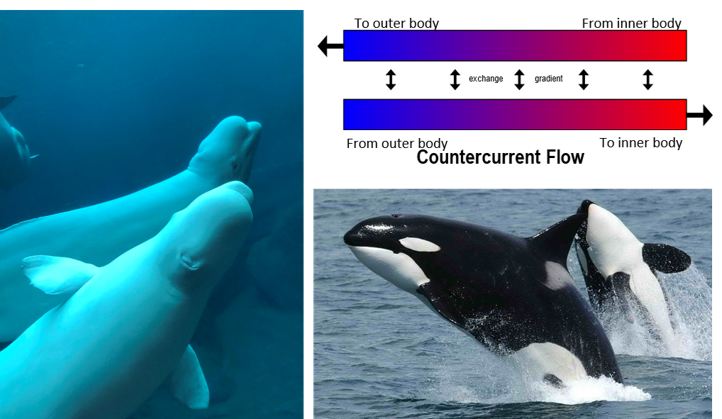
The leaves are falling, which means: winter is coming.
In Game of Thrones, winter meant the onset of freezing temperatures, blizzards, and attacks from the dreaded White Walkers. If the White Walkers didn’t get you, dying of hypothermia was still a possibility. The optimal body temperature for humans is 37⁰ C, or 98⁰ F; if our body temperature decreases just a few degrees below this we are at risk of getting hypothermia. Thermoregulation, or control of body temperature, is critical for the survival of every animal. In Game of Thrones the characters wore thick fur cloaks to stay warm, borrowing the thermoregulation tactic of wolves; grey wolves, which inhabit arctic regions among other locations, have a thick fur coat. Fur is an extremely good insulator because it traps a layer of air between the skin and the ambient environment. Air has very low thermal conductivity, meaning it does not transfer heat, or cold, rapidly, which is why many animals use this tactic to keep warm and some have special adaptations, or traits, that make their fur even better at conserving heat. Polar bear fur, which appears white, is actually transparent and this allows it to reflect heat transferred by radiation, or infrared and light energy; this property of polar bear fur, in addition to trapping a layer of air, keeps polar bears warmed to 37⁰ C when air temperatures are -40⁰ C.
While fur is an excellent insulator, not all animals that live in arctic habitats possess fur coats. If you’ve ever seen a beluga whale or orca, you’ve surely noticed that they don’t have fur. Instead these animals insulate using blubber, which is a thick layer of fat under the skin. When water temperatures drop, the blood vessels in the blubber constrict, decreasing blood flow to the skin and keeping heat in the center of the body. The skin is kept at a temperature close to that of the water to decrease heat loss from the animal to the environment. To keep the skin at a colder temperature, whales living in arctic waters employ counter-current heat exchange to stay warm. In counter-current heat exchange, warm blood traveling outward from the center of the body passes by the cold blood traveling from the outer body back towards the heart. The warmer blood from the center of the body transfers heat to the cold blood traveling back from the outer body. This keeps the heat in the center of the body near the organs essential for survival, while the outer body layers, like the skin and blubber, remain cooler.

So when these animals hear winter is coming, clearly they’re not too concerned, because they have special adaptations that enable them to survive the cold. Now, you might be wondering how I choose to thermoregulate… Despite being inspired by the Game of Thrones characters who have braved snowstorms while fighting off White Walkers, I think I will continue to opt for a giant cup of hot chocolate in front of a fireplace and thick, fuzzy socks.
Edited by Amala John.